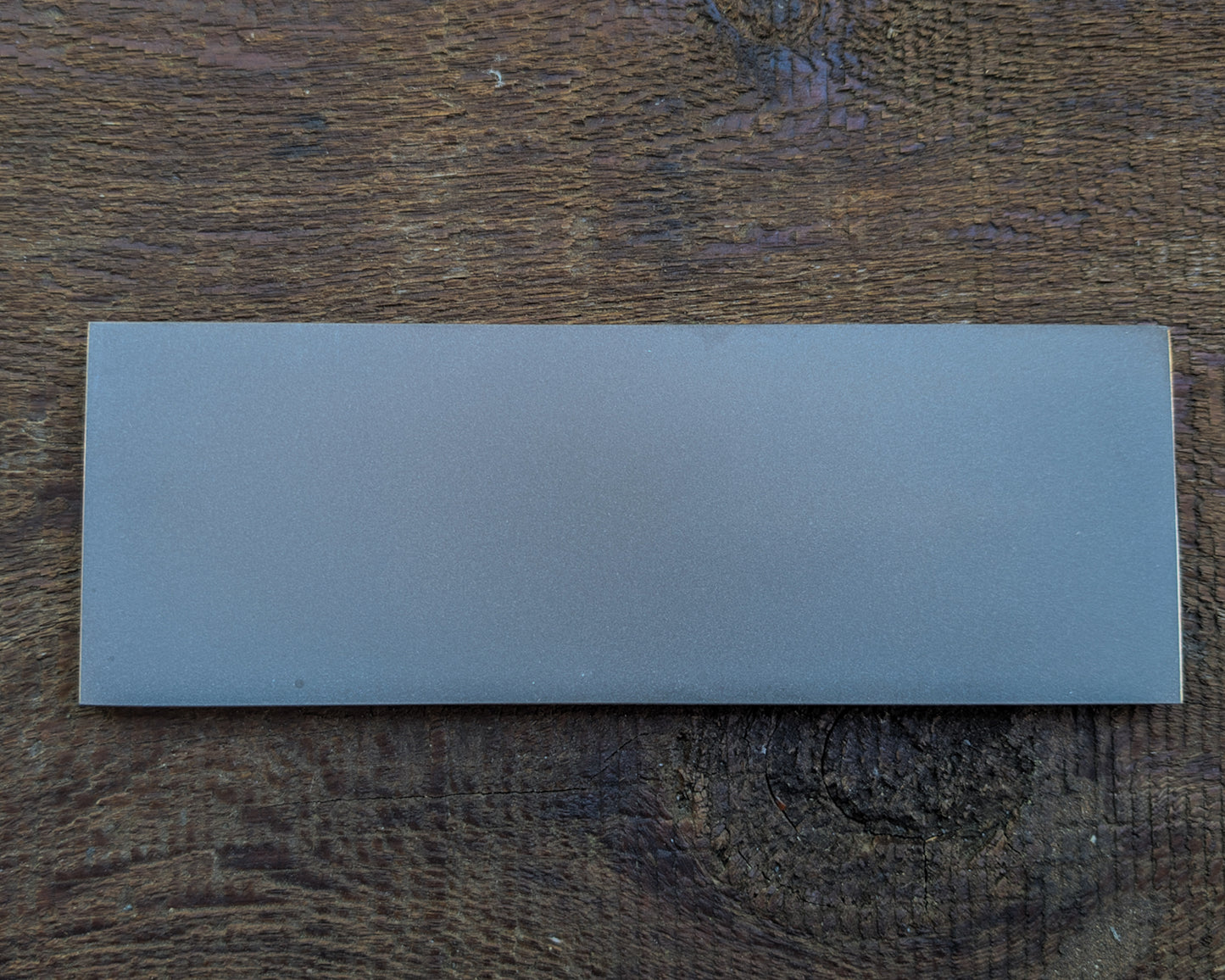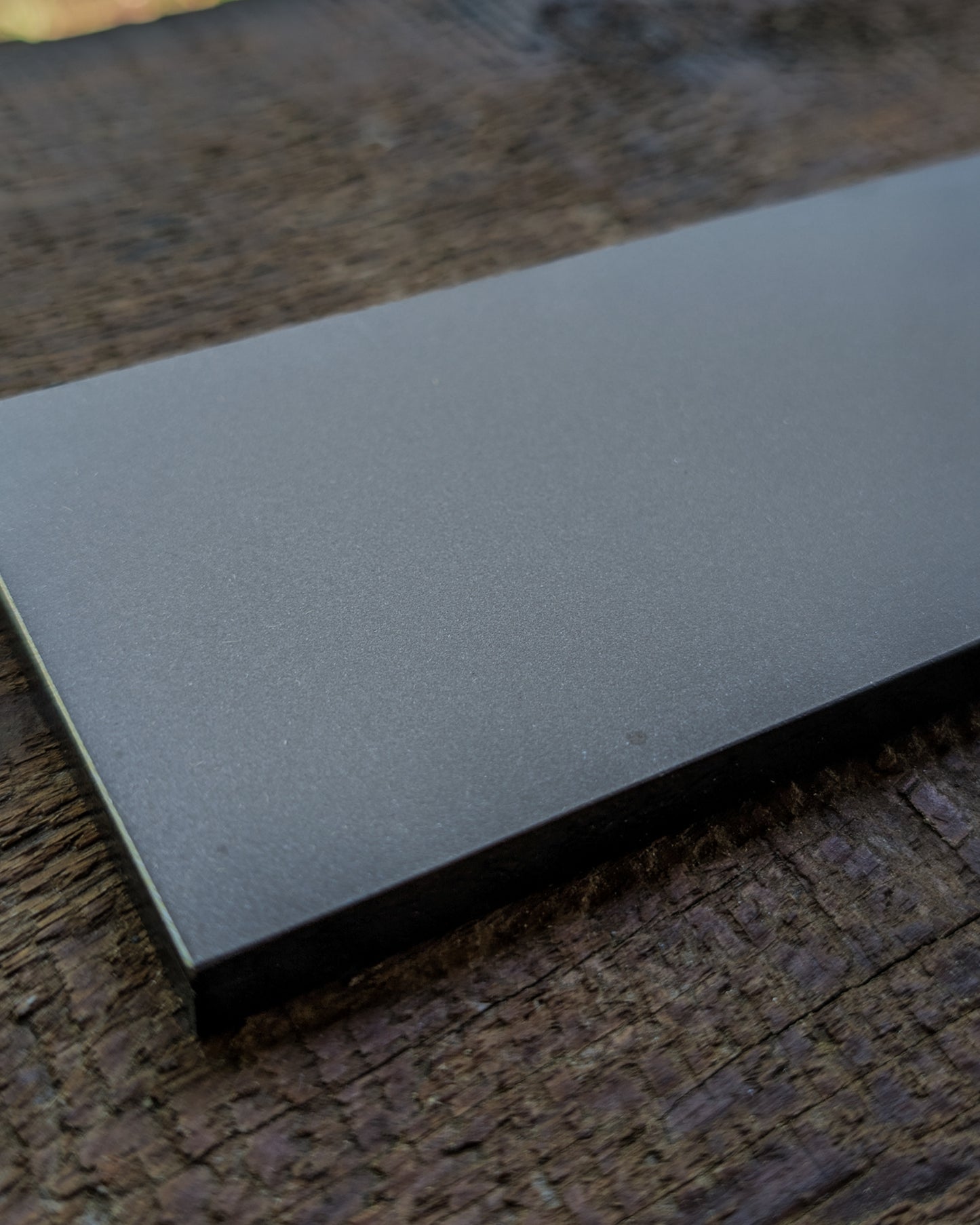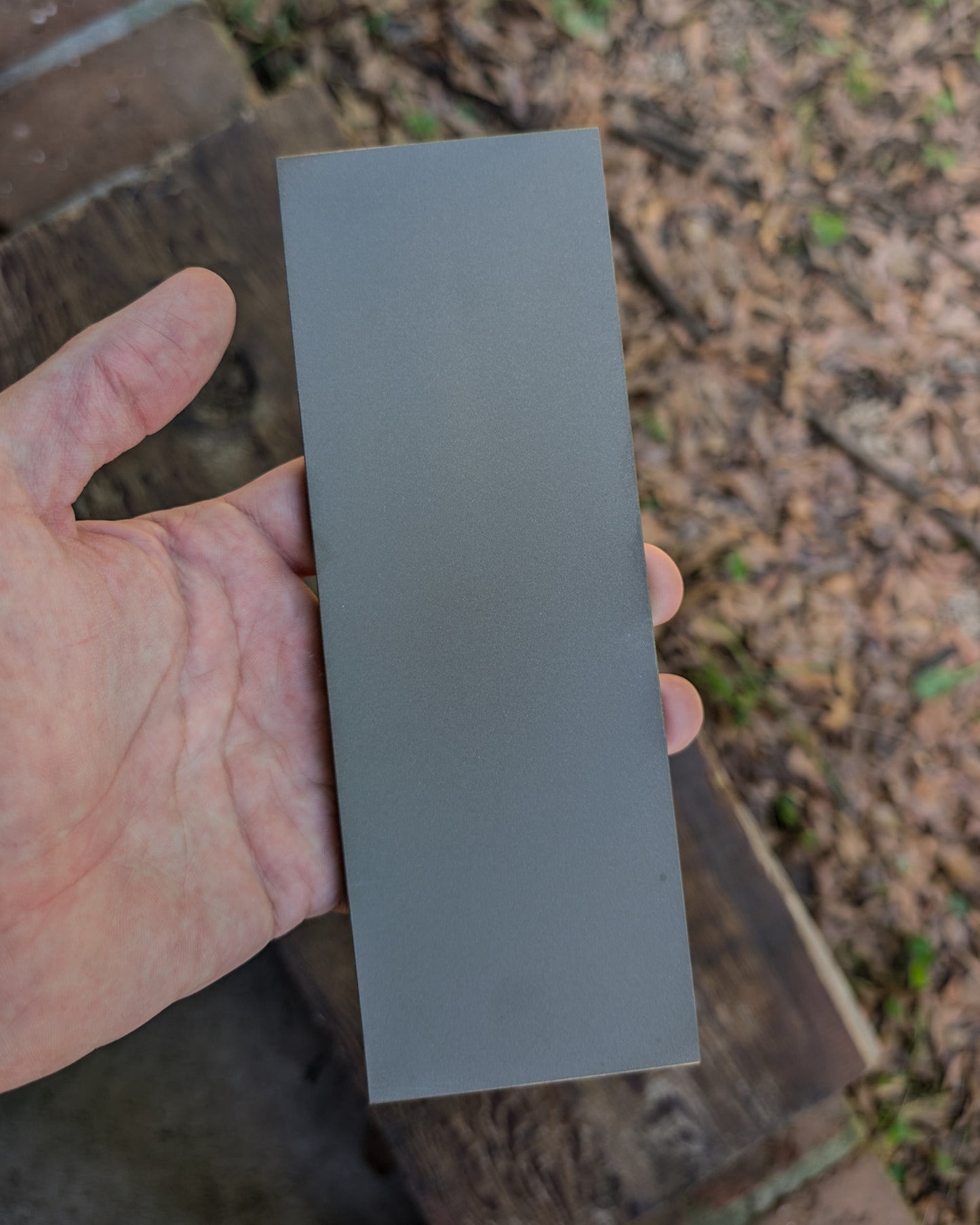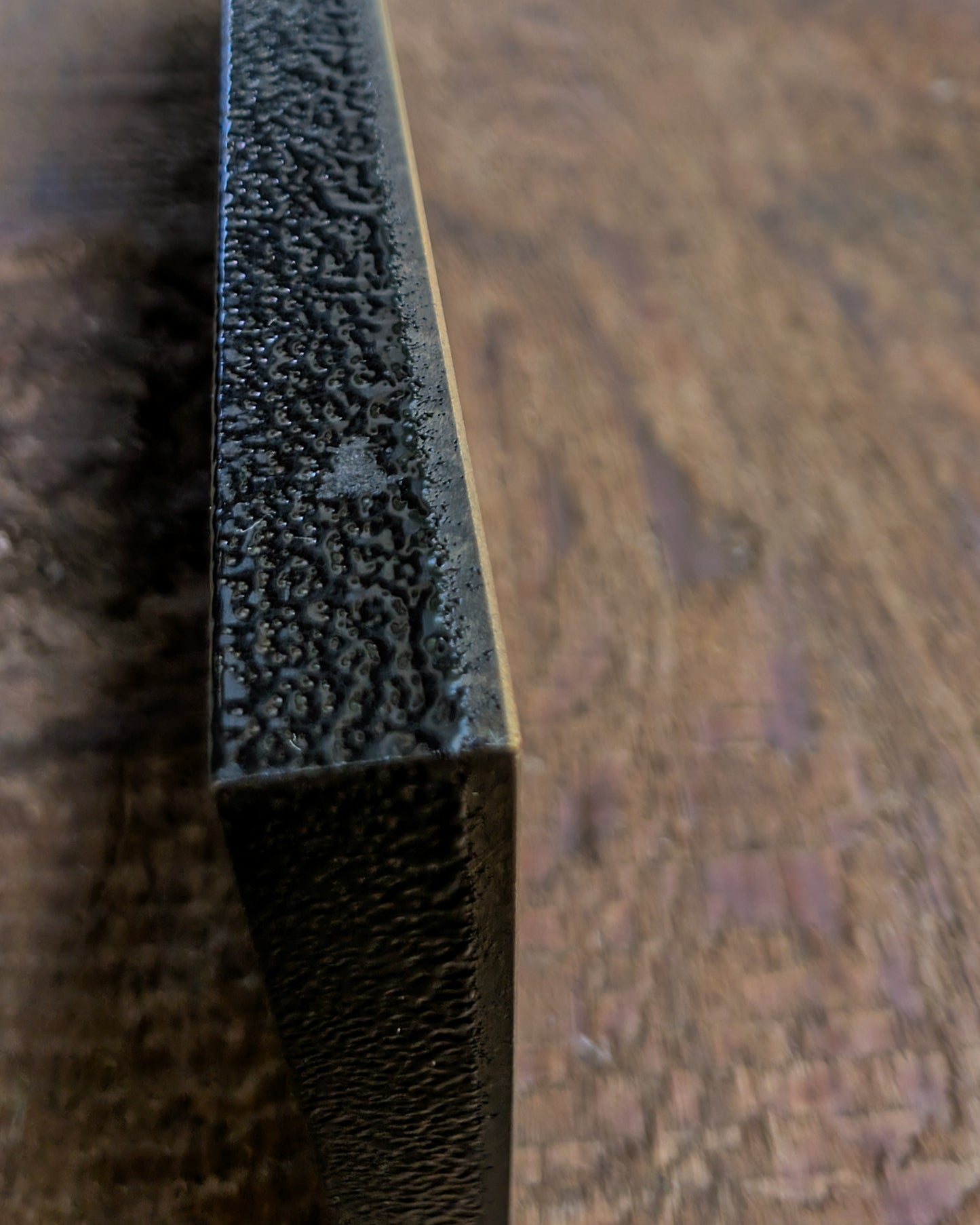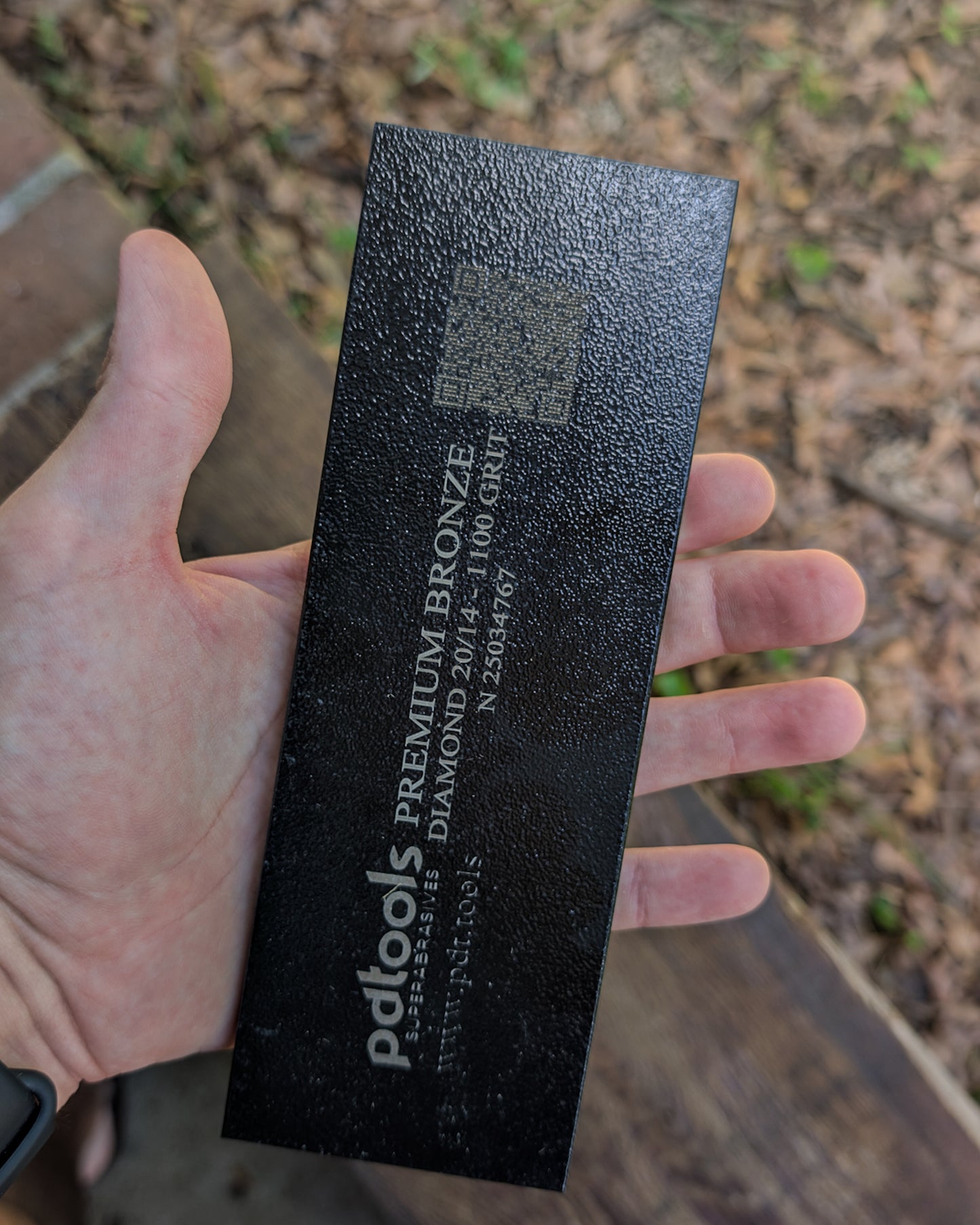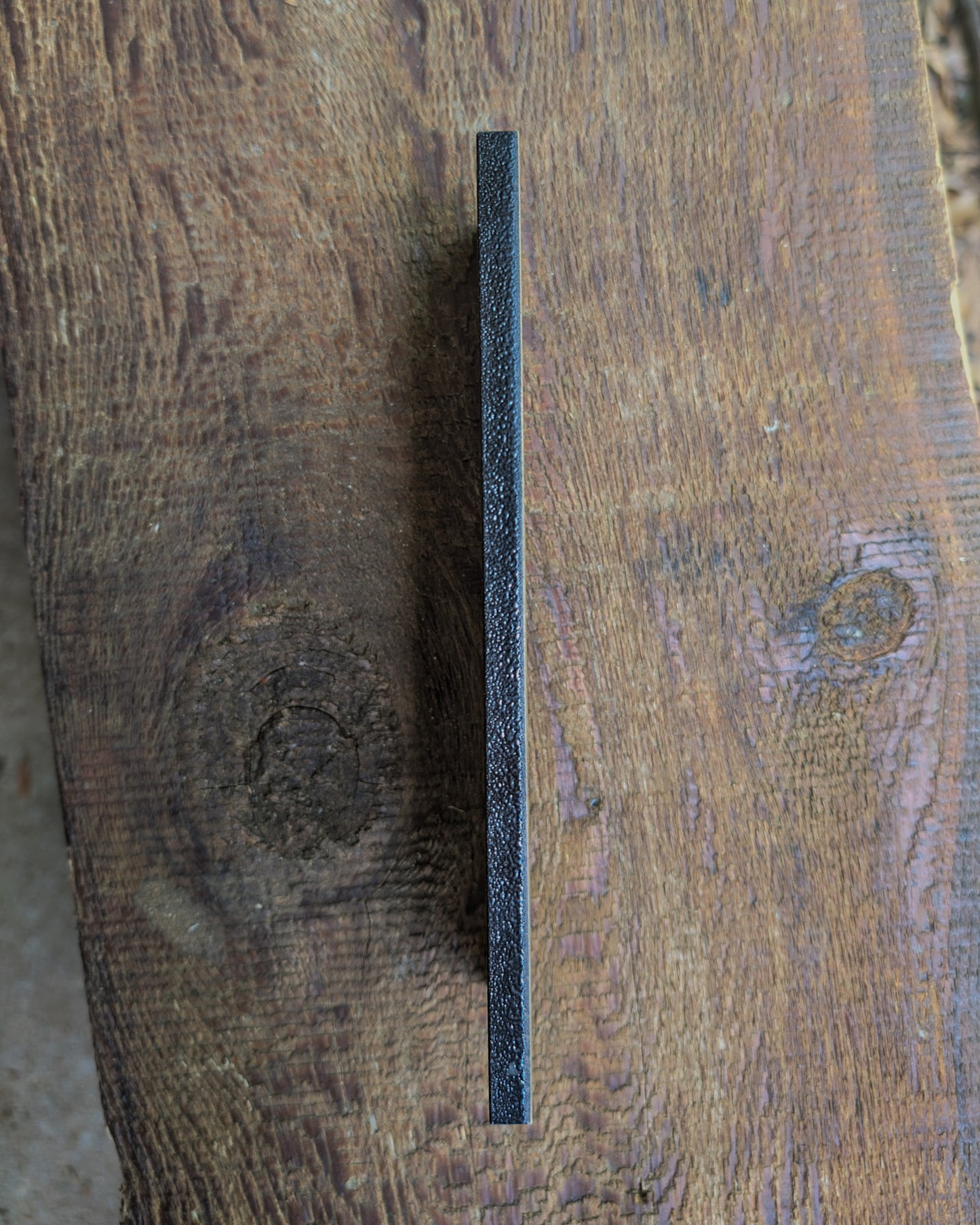Poltava Diamond Tools 8"x3" Bench Stones
Poltava Diamond Tools 8"x3" Bench Stones
Low stock: 1 left
SKU:pdtbench325
Couldn't load pickup availability
Learn About Redline Blades' Certified Source Guarantee
Learn About Redline Blades' Certified Source Guarantee
At Redline Blades, we only source our knives from verified distributors, or direct from trusted brands like Spyderco, Lynch NW, Skiff Worksharp, Demko, and more!
We believe in selling only superior, reputable products to ensure you fall in love with every purchase.
Poltava Diamond Tools of Ukraine makes some of the highest quality sharpening stones currently available. They specialize in resin and metallic bonded abrasives using both diamond and CBN. We have sourced a range of specially selected resin and metallic boded diamond stones from Poltava. In this 8"x3" bench stone size, we have 3 grits to choose from; when combined these 3 grits should make a basic progression from initial bevel setting to final polishing.
The metallic binder that these bench stones use is incredibly tough and hard wearing. It will need very minimal flattening, will not gauge, cut quickly, and should last an incredibly long time. I have heard this binder described as "basically a brake pad from a car" in regards to how tough it is. In my experience, I would agree
The abrasive of these stones is mounted onto a heavy cast base that keeps these stones tough and heavy. These should work perfectly with any universal stone holder.
- 50/40 micron metallic bonded diamond. This is a coarse stone for the initial stage of sharpening, roughly equivalent to 325 grit. This metallic bonded stone will be incredibly tough and hard wearing.
- 20/14 micron resin bonded diamond. This is medium grit stone, approximately 1100 grit. The scratch pattern is a very nice 1k, defined scratch pattern but still cuts smoothly. Easy to finish and deburr with, this makes a great all around user edge; or sets you up to transition to your polishing stone(s).
- 5/3 micron resin bonded diamond. This is getting into your polishing territory at approximately 4000 grit. This should leave a minimal scratch pattern that is becoming a polish, and with some stropping afterwards should get you a nice polished edge.
Recommended care
If the surface starts to wear and get loaded with metal after a few uses, you can condition with a coarse to medium grit synthetic nagura stone, or sturdy brush with soap and water. If the stones start to wear after continued use and are no longer flat, use loose silicone carbide powder on float glass to flatten and recondition the surface. Recommended to use 80 grit to flatten, then condition if needed with 120 and/or 320 grit.
Share
